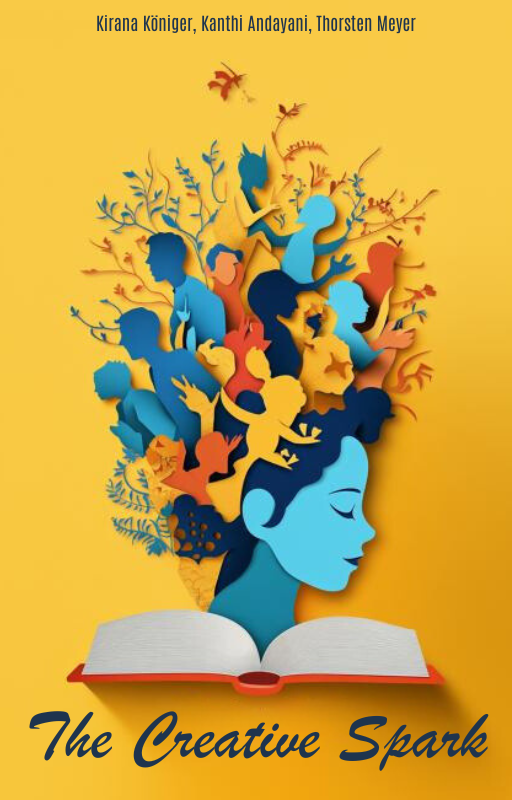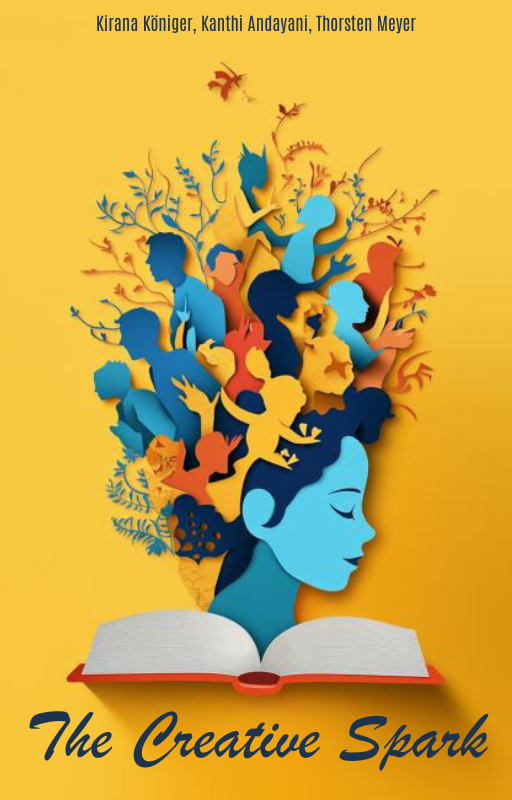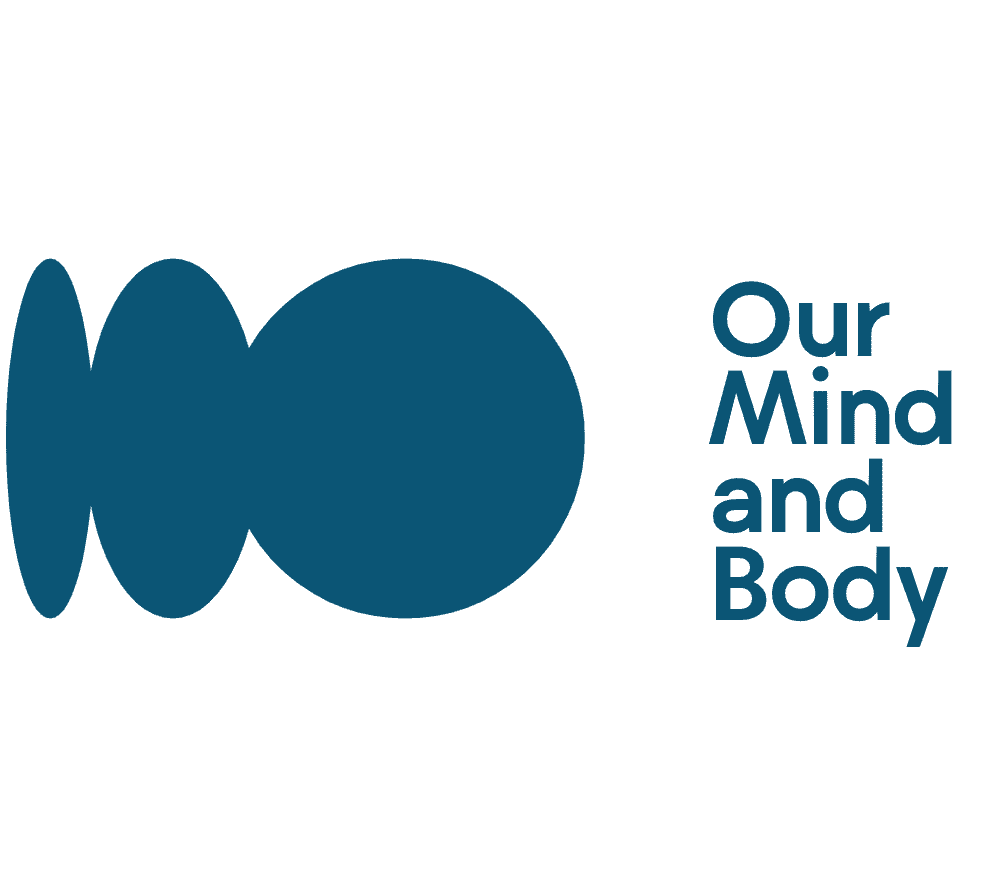Personal Growth
Understanding Stress: Identifying Your Unique Triggers for Better Management

Stress is a typical occurrence in life and can stem from a variety of sources. It can manifest in both mental and emotional ways, presenting differently for each person.
Stressors such as work responsibilities or financial issues are just some of the many sources that can trigger feelings of stress. These stressful situations can lead to anxiety triggers like racing thoughts, restlessness, irritability, exhaustion, etc.
We all have our own ways to cope with these emotions but it’s important to remember that no one’s journey is the same when it comes to dealing with mental or emotional distress. Moving forward, let’s look at how we might identify our unique stress triggers so we can begin to manage them better.
Identifying Stress Triggers
Identifying stress triggers can be an important step in managing your daily stress levels. It’s crucial to recognize and understand what situations or emotions can cause us to feel overwhelmed or overstressed so that we can take steps to reduce the intensity of our responses. To start, it may help to track your thoughts and feelings throughout the day so you can pinpoint which activities are causing you distress. If a certain activity consistently causes anxiety, try taking small breaks during this task or break it into smaller pieces.
It might also help to practice mindfulness techniques like deep breathing exercises and progressive muscle relaxation when experiencing stressful moments. This will give you more time to analyze why you are feeling stressed and provide tools for calming yourself down if needed. Additionally, talking with a friend, therapist, or other support system can offer insight into how best to manage these types of experiences.
By recognizing our stressors and taking proactive measures such as tracking our thoughts and engaging in relaxation practices, we can begin to better control our reactions towards them. Taking the necessary steps towards understanding where our stress comes from is essential in finding creative outlets that work for us on a daily basis. With a greater awareness of what stresses us out, we can start taking meaningful action towards finding calm even amid life’s challenges!
Relaxation Techniques
Now that you’ve identified the stress triggers in your life, it’s time to focus on relaxation techniques. Stress relief is essential for maintaining a healthy mind and body. Fortunately, there are many ways to get started.
Deep breathing can be an effective way to relax when feeling overwhelmed or anxious. Taking slow, deep breaths from your belly helps to lower heart rate and release tension from the body. Visualizing calm places or scenes while focusing on each breath also assists with this practice.
Yoga poses such as child’s pose, cobra pose and corpse pose are great for physical stretching, but they can also provide mental reprieve by calming our minds through meditation-like practices. Even if you don’t have access to a yoga class, these simple poses can work wonders at relieving stress when practiced regularly. Additionally, guided meditations are helpful tools to achieve inner peace and clarity of thought among other benefits during times of distress. Whether you’re new to meditation or already incorporating it into your daily routine, take advantage of the various resources available online like audio recordings or apps dedicated solely to meditation practice.
By implementing relaxation techniques into your lifestyle, you’ll be able to manage stress more effectively and cope with life’s challenges in a healthier manner. Physical activity is another excellent strategy for managing stress levels…
Physical Activity
Physical activity can be a great way to cope with life’s challenges. Regular exercise routines, such as aerobic exercises and strength training, are known for their ability to reduce stress and improve overall mental health. Yoga is another popular form of physical activity that helps to stimulate the mind-body connection by teaching relaxation techniques and poses that promote mindfulness. Even just going out for a walk or engaging in some simple stretches at home can help you calm down during stressful times. Not only does physical activity release endorphins which boost your mood, but it also gives you an opportunity to focus on yourself without having to worry about anything else. Moving your body is one of the most effective ways to clear your head and get back into balance.
Artistic Pursuits
Many of us have experienced the life-altering effects that stress can bring. But rather than succumbing to these symptoms, studies show that creative outlets such as painting, drawing, photography, music-making and sculpting can help reduce anxiety and depression. As a professional life coach or mental health writer, I’m here to tell you that exploring artistic pursuits is an important tool for coping with life’s challenges.
From my experience working with clients who are struggling to manage their stress levels, I’ve seen firsthand how creativity can be used as an effective way to tame daily anxieties. Not only does art offer an escape from our worries and fears but it also allows us to express ourselves in ways we wouldn’t normally consider. Plus, by engaging in something new or different on a regular basis – like taking up photography or learning pottery – we’re able to explore our passions while developing deeper connections with those around us.
The beauty of embracing our inner artist is twofold: not only do we get to release any built-up tension and reconnect with what matters most, but we also gain access to greater insight about ourselves along the journey. By allowing yourself permission to create without judgment or expectation of perfection, you’ll find your confidence growing each day until eventually you can conquer anything life throws your way. With this newfound strength comes the ability to face whatever lies ahead – from dealing with difficult emotions all the way through making significant life changes – knowing that no matter what happens, you have both imagination and resilience at your disposal.
Achieving balance in one’s life requires more than just physical activity — it involves engaging in activities that feed the soul too! Writing activities such as journaling provide another form of creative expression where feelings can be explored and released freely onto paper…
Writing Activities
Writing can be an incredibly cathartic activity, allowing us to express our thoughts and emotions in a safe space. One of the best ways to cope with life’s challenges is to find some creative outlets that you can indulge in on a daily basis. Writing activities such as blogging, journaling, creative writing, story writing, or even script writing provide an excellent opportunity for self-expression and emotional release. By taking time each day to write about your experiences – both positive and negative – you’re able to get out all of those difficult feelings without having them take up too much space inside your head.
Writing helps us make sense of our lives by providing clarity around what we are feeling. We can also use it as an outlet for creativity when it comes to finding solutions to any problems we may face. For example, if you’re struggling with a decision you have to make at work, try brainstorming different possible outcomes through written ideas before deciding which one feels right. Not only will this help give you confidence in making the right choice but it will also allow you to explore aspects of yourself that perhaps weren’t previously considered.
Overall, creating regular opportunities for yourself to write freely during times of stress or difficulty can be highly beneficial in helping you manage life’s challenges more effectively. It gives you permission and space to voice your true feelings and opinions without fear of judgement from others so that ultimately, peace within yourself is easier achieved.
Social Connections
Connecting with others is a powerful way to cope with life’s challenges. Social engagement and support can be found in many forms, from developing meaningful relationships to participating in social networks. We all need emotional connection for our well-being; connecting with people who understand us helps us feel more secure, accepted, validated and inspired.
Finding the right kind of peer support can help us navigate difficult times by providing an outlet for processing thoughts and feelings. Having someone listen without judgement or criticism gives us space to express ourselves freely. When we have strong supportive relationships around us, it can give us strength when facing adversity and inspire hope for the future.
Having access to reliable social connections allows us to build resilience through collaboration and shared experiences. It’s also important to make sure that these connections foster positive energy rather than draining resources – look out for healthy ways of spending time together such as outdoor activities or volunteering projects! With this kind of positive reinforcement, we can start building up our coping skills while growing closer to those around us – making it easier to tackle any challenge ahead. Transition into the subsequent section: Spiritual practices offer another path towards inner peace and balance during tough times.
Spiritual Practices
When faced with life’s challenges, finding creative outlets to help cope with stress can be a great way to stay balanced. Spiritual practices are one such outlet that can provide powerful healing and relaxation benefits. Here are some spiritual practices I recommend for daily use:
- Meditation: Taking time each day to sit in silence and practice mindful meditation is an excellent way to foster inner peace. Regularly meditating helps clear the mind of worries and anxieties, enabling us to make better decisions during tough moments.
- Prayerful Meditation: This form of meditation combines prayer with stillness as we deeply reflect on our thoughts and emotions. By listening to what our heart truly needs, we gain clarity about how best to move forward with whatever challenge lies ahead.
- Mindfulness Practices: Practicing mindfulness activities regularly allows us to become more aware of ourselves and our environment. It also makes it easier for us to recognize when we need support or assistance from others during challenging times.
These spiritual practices can provide much-needed relief from stress by connecting us back into a place of serenity within ourselves. Whether through meditation, prayerful reflection, or mindfulness exercises, taking time out each day for these activities can help us remain grounded amidst all life’s uncertainties. Moving onto cognitive reframing techniques…
Cognitive Reframing
Well, that was quite a spiritual journey we just embarked on! Now it’s time to move on and explore another approach for dealing with life’s challenges: cognitive reframing. Cognitive reframing is about shifting our perspective in order to gain insight into the situation and make adjustments as needed. By changing our thoughts, we are able to help ourselves cope better with difficult emotions and challenging situations.
Let’s take a look at how this works by looking at an example of cognitive reframing: if something goes wrong or doesn’t turn out as expected, instead of thinking “this always happens to me” you can choose to think “I will learn from this experience.” This shift in thought encourages us to focus on solutions rather than problems while still acknowledging our current circumstances.
| The table below outlines different types of mental reframes you can implement when faced with stressors: | Cognition | Reframe | Positive Self-Talk |
|---|---|---|---|
| Catastrophizing | Look for evidence | It won’t be so bad | |
| Negative Filtering | Seek out positive | I have the power to change my outlook | |
| All-or-Nothing | Take one step at a time | I’m doing the best that I can do | |
| Overgeneralization | Examine specifics | Everyone makes mistakes |
As you can see, there are many ways to practice cognitive restructuring which allows us to challenge negative thoughts and replace them with more productive ones. By making small shifts in your mindset, you’re able to view things differently and find creative outlets for dealing with life’s challenges.
Positive Self-Talk
Talking positively to yourself is one of the most powerful self-empowerment techniques available for coping with life’s challenges. Positive self-talk can help build your confidence, boost your resilience and put you in a more positive frame of mind. It’s like giving yourself an inner pep talk that encourages you to keep going even when things get tough.
There are many ways to use positive self-talk; it all depends on what works best for you. Some people find motivational affirmations helpful — repeating uplifting statements such as “I am strong and capable” or “I will succeed no matter what” helps them stay focused and motivated. Others prefer using positive mantras — short phrases they repeat over and over again to reprogram their thoughts. Still others might benefit from writing down their goals and reading them aloud every day as a reminder of how far they have come.
No matter which technique you choose, it’s important to remember that everyone has moments of doubt and fear, but these feelings don’t last forever. With some practice, positive self-talk can become second nature — providing reassurance whenever needed so that you always feel ready to tackle whatever life throws at you!
Frequently Asked Questions
What Are The Long-Term Effects Of Stress?
When it comes to the long-term effects of stress, many people don’t realise that the consequences can be far more damaging than they initially think. Stress-related health issues can arise from dealing with too much tension for a prolonged period of time, leading to an increase in physical and mental illnesses. Even though these symptoms may not appear immediately, their insidious nature makes them all the more dangerous.
The first thing we should consider when looking at chronic stress is its effects on our mental wellbeing. It’s no secret that feeling stressed out often leads to episodes of anxiety and depression, but there are other less obvious signs you need to look out for as well. Insomnia, lack of motivation and concentration problems can all be attributed to increased levels of stress over a long period of time. If left unchecked, these issues could lead to further mental health complications such as substance abuse or self-harming behaviour.
It goes without saying that the body won’t remain unscathed either; stress has been linked to a variety of physical ailments ranging from fatigue and headaches through to heart disease and digestive disorders. As if this weren’t enough, being under constant pressure also weakens your immune system making you vulnerable to viruses and infections which might otherwise have been avoided.
Therefore, it’s important we take steps now towards eliminating any sources of chronic stress before it becomes too late – because once those stressful feelings start taking hold, it isn’t easy letting go! Taking some time each day for yourself by indulging in creative outlets like writing or painting can help relieve tension while providing an enjoyable outlet for expression – so make sure you find something that works best for you!
How Can I Tell The Difference Between Healthy And Unhealthy Stress?
It’s important to recognize the difference between healthy and unhealthy levels of stress. Managing stress is a vital part of keeping your mental health in check, as it can have long-term effects on your well-being if left unchecked. Identifying sources of stressors in our lives and determining how we react to them are key components for knowing when you’re at healthy or unhealthy stress levels.
When identifying stressors, ask yourself these questions: How am I feeling? What has been affecting me lately? Am I taking enough time out for leisure activities? Once you’ve identified what may be causing distress, there are several coping strategies available that can help manage any feelings of anxiety or overwhelm. Here are some ideas:
- Exercise regularly – this releases endorphins which help boost mood, reduce fatigue and enhance cognitive function.
- Try mindfulness practices such as deep breathing exercises or meditation – this helps focus the mind and promote relaxation.
- Connect with family and friends – socializing and confiding in those closest to us can provide emotional support during difficult times.
Unhealthy stress occurs when we become overwhelmed by too much pressure from external events or internal emotions. This can lead to physical symptoms like headaches, chest pains or insomnia, as well as mental signs such as irritability, restlessness, difficulty concentrating and negative thought patterns. If left untreated, chronic high levels of stress can even cause depression or other serious psychological issues over time.
Learning how to identify triggers that create excessive amounts of tension is the first step towards managing your own personal stressors effectively. Developing effective coping mechanisms through lifestyle changes such as exercise and increased social interaction will also help bring balance back into life while ensuring sustainable healthy stress levels. Taking control of stressful situations before they take control of you is crucial for maintaining good overall wellbeing!
What Are Some Easy Ways To Reduce Stress?
Do you feel like stress is taking over your life and you don’t know what to do? From the pressures of work, family, or just everyday life – it can be hard to find ways to reduce anxiety naturally. Fortunately, there are many techniques and lifestyle changes that can help us cope with our daily stresses.
We can start by incorporating some easy mediation techniques into our lives. Taking a few moments each day to close your eyes and focus on breathing deeply can have an incredible effect on reducing tension in both the body and mind. Additionally, deep breathing exercises such as diaphragmatic breathwork improve relaxation immediately while also helping build resilience for future stressful situations.
In addition to these practices, making small lifestyle adjustments may prove helpful too. For instance, carving out time throughout the day for yourself to take part in activities that will nourish your soul – like reading a book or going for a walk – will provide much-needed relief from stressors. Finding healthy outlets such as regular exercise or spending time outdoors not only helps reduce stress levels but also boosts moods and overall well-being.
Taking steps towards managing stress does not need to be complicated; simple yet powerful approaches exist which can make all the difference when dealing with difficulties in life. Remembering to breathe deeply every once in awhile along with implementing other positive habits will go far in supporting mental health and creating balance during times of difficulty.
Are There Any Quick Stress Relief Activities That I Can Do?
Are there any quick stress relief activities that I can do? Stress can take a toll on our mental and physical health, so it’s important to find ways to manage it. There are many different types of stress-relief activities available, ranging from simple relaxation techniques to more involved strategies. Fortunately, there are some shorter-term solutions you can use when time is limited or when you need an immediate boost in mood.
One way to quickly reduce your level of stress is by trying out short-term stress relief methods. These include deep breathing exercises, mindfulness meditation, guided imagery, progressive muscle relaxation and yoga poses. All these practices can help relax the body and mind while providing focus on positive feelings. Even taking a few minutes each day for one of these activities can make a huge difference in how we cope with life’s challenges.
Simple stress relief doesn’t always have to involve lengthy practice sessions either; sometimes just engaging in enjoyable hobbies or activities for even a few minutes at a time could provide much needed respite from daily stresses. You don’t necessarily have to go all out here; playing video games for 10 minutes or writing down your thoughts for 20 minutes – whatever makes you feel good – might be enough to help refocus and clear your headspace after a long day. Taking breaks throughout the day also allows us to pause and reset before tackling the next challenge ahead of us.
No matter what type of activity you choose, remember that dedicating even a small amount of time towards managing your own wellbeing will pay off later in terms of improved productivity and overall mental health. Don’t hesitate to explore different options until you find something that works best for you!
How Much Time Should I Dedicate To Stress Relief Activities?
It’s easy to get overwhelmed by the daily stress of life, but it is important to take some time for yourself and dedicate a portion of your day towards stress relief activities. Figuring out how much time you should allot for these activities can be tricky, but with a little bit of guidance, you can learn how to effectively manage your time and cope with stress in healthy ways.
Like an orchestra conductor guiding their musicians through beautiful music, having good time management skills will help ensure that you’re dedicating enough time each day towards relieving your stress. Taking even just a few minutes every morning or evening to practice breathing exercises or mindfulness meditation can have drastic effects on reducing your overall levels of anxiety and depression. You may also want to consider incorporating other types of physical activity into your routine like yoga or tai chi – both are known for improving mental clarity and focus while simultaneously boosting energy levels.
No matter which type of activity you choose to engage in, make sure that it works best for YOU! Everyone’s needs around managing their daily stressors are different, so be mindful when allocating the amount of time needed for any particular activity. Taking this extra step in understanding what works best for you can ultimately pay off in the long run; allowing yourself more room to breathe freely and enjoy the creative outlets available without feeling guilty about not taking care of yourself first.
Don’t let the fear of overcommitting keep you from finding moments throughout your day where you can relax and recharge – because we all need breaks now and then! Take control by setting aside specific times during which you’ll devote solely towards relieving stress through creative outlets such as painting or journaling; doing so will allow you to better handle life’s challenges while still nurturing your own wellbeing at the same time.
Conclusion
Stress can be a huge burden to many people and it is important to find ways of dealing with the stress that life throws our way. Learning how to cope with stress in healthy, creative ways is essential for maintaining both physical and mental wellbeing. Taking the time to dedicate yourself to activities such as yoga, art therapy, writing or any other form of self-expression can help us gain control over our emotions and reduce anxiety levels.
It’s also important to remember that everyone reacts differently when faced with stressful situations. What works for one person may not work for another. Therefore, it’s up to you to discover which methods are most effective in relieving your personal level of stress. You may want to experiment by trying different types of activities until you find something that works best for you; don’t give up if what you try at first doesn’t seem successful!
Finally, make sure that whatever activity you choose provides enough time for relaxation so that you can truly enjoy it without feeling rushed or overwhelmed. Don’t forget: taking care of ourselves during times of intense stress will help ensure we have the strength and resilience needed to tackle life’s challenges head on!
Meet Kalinda, the passionate and visionary Editor-in-Chief of OurMindAndBody.com. Kalinda is a beacon of light in the realm of holistic well-being, and her mission is to positively impact the lives of others by inspiring them to embrace a healthier and more fulfilling lifestyle.
With a deep-rooted love for meditation, yoga, and spirituality, Kalinda’s journey toward self-discovery and personal growth started at a young age. She found solace and strength in these practices, which not only helped her cope with the challenges of life but also provided her with a profound sense of purpose. Eager to share the transformative power of these ancient disciplines, Kalinda embarked on a path to spread awareness and understanding.
Personal Growth
Book Review: “The Creative Spark: Unleashing Your Inner Artist”

Rediscovering Creativity in the Digital Age
In a world where digital distractions often overshadow our creative instincts, “The Creative Spark: Unleashing Your Inner Artist” emerges as a timely and empowering guide. Authored by Kirana Königer, Kanthi Andayani, and Thorsten Meyer, this book provides a comprehensive and accessible approach to reigniting the creative flame within each of us.
A Global Tapestry of Creative Wisdom
The authors draw on their diverse backgrounds—Indonesian roots, European influences, and global experiences—to weave a rich tapestry of creative insights. This multicultural perspective is not just a backdrop but the foundation of the book’s philosophy, which sees creativity as a universal language that transcends cultural and geographical boundaries.

Expanding the Boundaries of Creativity
“The Creative Spark” encourages readers to rethink creativity, moving beyond the traditional confines of the arts. The authors argue convincingly that creativity is a fundamental life skill, essential for problem-solving, personal growth, and professional success across all domains.
The Science of Creativity
Anchored in scientific research, the book explores:
- The neurological foundations of creativity
- The roles of different brain regions in creative thinking
- The impact of neuroplasticity on the development of creative skills
- How environment and lifestyle choices affect creative potential
Practical Exercises for Creative Development
Each chapter offers a variety of hands-on exercises designed to nurture creativity across different fields:
- Writing prompts to spark the imagination of aspiring authors
- Visual challenges for artists and designers
- Culinary experiments for food enthusiasts
- Mindfulness practices to enhance creative awareness
- Cross-disciplinary projects that blend multiple forms of artistic expression
Overcoming Creative Challenges
The book provides practical strategies for overcoming common obstacles in the creative process, including:
- Breaking through creative blocks and periods of stagnation
- Overcoming self-doubt and imposter syndrome
- Managing perfectionism and the fear of failure
- Balancing creative pursuits with everyday responsibilities
Creativity in the Digital Era
The authors thoughtfully examine how technology can both enhance and hinder creativity, discussing:
- The potential of digital tools to support creative processes
- Balancing digital and analog approaches to creativity
- Leveraging social media to share and promote creative work
- Addressing ethical considerations in the age of AI-generated art
A Journey of Self-Discovery
Throughout the book, the authors share personal stories from their own creative journeys, adding depth and relatability to the content. Readers are invited to embark on their own journey of self-discovery, guided by reflective questions and exercises designed to help uncover their unique creative strengths.
Critical Analysis
Strengths:
- A broad and inclusive approach that extends beyond traditional artistic boundaries
- A multicultural perspective offering a wealth of global insights
- A strong scientific foundation combined with practical applications
- An accessible tone that makes creativity approachable for all readers
Considerations:
- The broad scope of topics may be overwhelming for some readers
- Certain cultural references may resonate differently depending on the audience
- Some advanced readers may find familiar concepts, though they are presented with fresh insights
Conclusion: A Guide to Creative Renewal
“The Creative Spark: Unleashing Your Inner Artist” is more than just a guide to artistic expression—it’s a blueprint for living a more imaginative and fulfilling life. By redefining creativity as a core human trait, the authors offer a work that has the potential to transform not just how readers approach art, but how they approach life itself.
Rating: 4.85/5 stars
Highly recommended for its inclusive approach, scientific grounding, and transformative potential, “The Creative Spark” stands out as a valuable resource for anyone looking to reignite their creative passions and embrace a more inspired way of living.
Meet Nadi, the soulful writer and explorer of inner realms who graces OurMindAndBody.com with her profound insights and heartfelt wisdom. With a profound passion for mindfulness, meditation, and spiritual growth, Nadi weaves words that touch the hearts and minds of readers, leaving a lasting impact on their well-being journey.
Rooted in a background of philosophy and psychology, Nadi’s curiosity about the human mind and the mysteries of the soul led her on a transformative path of self-discovery. Drawn to the transformative power of mindfulness and meditation, she embarked on a quest to understand the intricacies of these practices, not only for her own growth but also to inspire others to embark on their own inner journeys.
Personal Growth
Clearing Brain Fog: Top Foods For Mental Clarity

Experiencing mental fog is like navigating through a dense forest without a map. It can be frustrating, exhausting, and hinder your ability to think clearly and be productive.
But fear not, because there is a way to clear the fog and regain mental clarity. By incorporating certain foods into your diet, you can nourish your brain and improve cognitive function.
In this article, we will explore the top foods that can help clear brain fog and enhance mental clarity.
Key Takeaways
- Brain fog is a state of mental confusion and exhaustion that hinders productivity and quality of life.
- Unhealthy eating habits cause inflammation and cognitive decline, while nutrient-rich foods repair cells and promote brain function.
- Blueberries, fatty fish, nuts, dark chocolate, leafy greens, turmeric, and green tea are foods that can improve brain health and clarity.
- A balanced diet with brain fog-fighting foods is crucial for mental clarity, and integrating these foods into your diet can help improve cognitive function and memory recall.
Top Brain Fog-Fighting Foods
I love incorporating these brain fog-fighting foods into my diet to improve my mental clarity and overall brain health.
Blueberries are a fantastic choice as they are rich in antioxidants, which prevent oxidative stress and inflammation in the brain. They also enhance memory function, making them a great addition to my daily routine.
Fatty fish, like salmon and sardines, are another favorite of mine. They contain omega-3 fatty acids that improve brain health, strengthen memory, and enhance cognitive function.
Nuts are a convenient and tasty option as they contain healthy fats, protein, and fiber, all of which contribute to improved cognitive functioning.
Dark chocolate, in moderation, is a delicious way to protect against oxidative damage and improve cognitive function with its flavonoids.
Leafy greens, such as spinach and kale, are nutritional powerhouses that provide vitamins and antioxidants to protect the brain.
Lastly, turmeric, with its anti-inflammatory and antioxidant properties, is excellent for improving memory function.
Incorporating these brain fog-fighting foods into my diet has made a noticeable difference in my mental clarity and overall brain health.
Importance of Nutrients
Nutrients from a balanced diet are vital for promoting brain health and enhancing cognitive function and memory recall. When it comes to clearing brain fog and improving mental clarity, certain nutrients play a key role.
Here are three essential nutrients that can help boost your brainpower:
-
Omega-3 Fatty Acids: These healthy fats found in fatty fish like salmon and sardines are crucial for brain health. They have been shown to improve memory and cognitive function, making them an excellent choice for combating brain fog.
-
Antioxidants: Foods rich in antioxidants, such as blueberries, protect the brain from oxidative stress and inflammation. They also enhance memory function, helping to clear mental fog.
-
Vitamin E: This powerful antioxidant found in nuts like almonds and sunflower seeds has been linked to improved cognitive functioning. Including these nutrient-rich foods in your diet can provide the essential vitamins and minerals needed for optimal brain health and mental clarity.
Gut Health and Cognitive Function
Improving gut health is crucial for enhancing cognitive function and promoting optimal brain function. The gut microbiome, which consists of trillions of microorganisms, plays a significant role in our overall health, including our mental well-being. Research has shown that a healthy gut contributes to emotional stability and cognitive capacity.
When the gut is filled with beneficial bacteria, it reduces anxiety and depression levels, leading to improved mental clarity. Incorporating whole foods into our diet is key to maintaining a healthy gut. Foods like fruits, vegetables, and whole grains are rich in fiber and essential nutrients that support gut health. Additionally, probiotic-rich foods like yogurt and kimchi can replenish the gut with beneficial bacteria.
By prioritizing gut health through a balanced diet, we can boost our cognitive function and experience greater mental clarity.
Effects of Diet on Sleep
Eating a balanced diet with nutrient-rich foods can positively impact sleep quality and duration. Poor diet choices, such as consuming excessive sugar and processed foods, can disrupt our natural sleeping habits, leaving us feeling fatigued and decreasing our cognitive function.
On the other hand, a diet that includes healthy fats and complex carbohydrates can improve our sleep. When we have sound slumber, we experience enhanced mental clarity and increased energy levels throughout the day.
Incorporating foods like blueberries, fatty fish, nuts, dark chocolate, leafy greens, turmeric, and green tea into our meals can help promote a restful night’s sleep. So, by making conscious choices about what we eat, we can improve both our diet and our sleep, leading to better mental clarity and overall well-being.
Blueberries: Memory Enhancer
Indulging in a handful of juicy blueberries is like unleashing a burst of sunshine in my mind. Their antioxidants work wonders in boosting my memory function. Blueberries are packed with antioxidants that help prevent oxidative stress and inflammation in the brain, ultimately enhancing memory function.
These little berries are also rich in flavonoids, which have been shown to improve cognitive function and protect against oxidative damage. Not only are blueberries delicious, but they are also a practical choice for improving mental clarity.
Whether enjoyed by themselves, added to a smoothie, or sprinkled on top of yogurt, incorporating blueberries into my diet is an easy and tasty way to support my brain health.
So, whenever I feel the fog rolling in, I reach for a handful of blueberries to give my memory a boost and clear away the mental haze.
Fatty Fish: Cognitive Booster
When I include fatty fish in my diet, I notice a significant boost in my cognitive abilities.
Fatty fish, such as salmon, trout, and sardines, are rich in omega-3 fatty acids, which are essential for brain health. These fatty acids help improve memory, enhance cognitive function, and even protect against age-related cognitive decline.
Research has shown that a regular intake of omega-3 fatty acids can improve attention, focus, and overall mental clarity. Additionally, the anti-inflammatory properties of omega-3s can reduce brain fog and promote a healthy brain.
Incorporating fatty fish into my meals not only provides me with a delicious and satisfying option but also supports my brain health and keeps my mind sharp.
Nuts: Brain Function Improvement
Including nuts in my diet has significantly improved my brain function and cognitive abilities. Nuts, such as almonds, walnuts, and cashews, are packed with healthy fats, protein, and fiber, all of which are essential for optimal brain functioning.
The healthy fats in nuts, including omega-3 fatty acids, help nourish the brain and support cognitive processes like memory and learning. Additionally, the protein in nuts provides a steady supply of amino acids that are necessary for neurotransmitter production, which influences mood and cognitive function.
The fiber in nuts helps regulate blood sugar levels, preventing energy crashes and promoting sustained mental clarity. I have found that incorporating a handful of nuts into my daily routine not only satisfies my snack cravings, but also boosts my brain power and enhances my overall cognitive performance.
Dark Chocolate: Cognitive Protection
Dark chocolate has been an essential part of my diet for its cognitive protection benefits. Not only is it delicious, but it also contains flavonoids that improve cognitive function and protect against oxidative damage. Flavonoids have been shown to enhance memory and attention, making dark chocolate a great choice for clearing brain fog and promoting mental clarity.
Studies have found that the antioxidants in dark chocolate can increase blood flow to the brain, which improves cognitive function. Additionally, dark chocolate has been linked to a reduction in inflammation in the body, including the brain, which can contribute to better mental health.
When choosing dark chocolate, aim for varieties with a high percentage of cocoa (70% or higher) to maximize the benefits. Remember to enjoy it in moderation as part of a balanced diet, as it is still high in calories.
So indulge in a small piece of dark chocolate to give your brain a boost and improve your mental clarity.
Frequently Asked Questions
How does brain fog affect productivity and quality of life?
Brain fog, like a dense fog over a city, impairs focus, memory, and energy levels, hindering productivity and diminishing quality of life. It’s crucial to address brain fog through a balanced diet and lifestyle choices for improved mental clarity.
Are there any other factors besides unhealthy eating habits that can cause brain fog?
Yes, besides unhealthy eating habits, other factors such as lack of sleep, chronic stress, hormonal imbalances, certain medications, and underlying medical conditions can also contribute to brain fog. It’s important to address these factors for improved mental clarity.
What are some nutrients that are essential for brain health and cognitive function?
Some essential nutrients for brain health and cognitive function include antioxidants from blueberries, omega-3 fatty acids from fatty fish, healthy fats from nuts, flavonoids from dark chocolate, vitamins from leafy greens, and anti-inflammatory properties from turmeric.
How does the gut microbiome affect emotional stability and cognitive capacity?
The gut microbiome plays a crucial role in emotional stability and cognitive capacity. Healthy gut organisms reduce anxiety and depression levels, while an imbalance can lead to mental health issues. Taking care of your gut health is essential for overall well-being.
Can a balanced diet with brain fog-fighting foods improve sleep quality?
Yes, a balanced diet with brain fog-fighting foods can improve sleep quality. A diet rich in healthy fats and complex carbs promotes sound slumber, leading to enhanced mental clarity and energy levels.
Conclusion
In conclusion, our brains deserve the best fuel to function at their peak. Just like a well-oiled machine, we can clear away the brain fog and unlock mental clarity with the power of food.
These brain fog-fighting foods are like superheroes, swooping in to save the day. Blueberries, fatty fish, nuts, dark chocolate – each one holds the key to unlocking our cognitive potential.
So let’s nourish our brains, fuel our minds, and banish brain fog for good. The power is in our hands, and on our plates.
Say hello to Cypress, the soulful wordsmith behind the insightful articles at OurMindAndBody.com. Cypress is a gifted writer who weaves words with grace and precision, using language as a powerful tool to inspire, heal, and uplift the spirits of readers.
With a background in literature and a passion for personal growth, Cypress brings a unique perspective to the world of well-being and spirituality. Having experienced the transformative effects of meditation and yoga firsthand, Cypress is deeply connected to the essence of these practices and their potential to enrich lives.
Personal Growth
Smart Investing: Maximizing Returns And Minimizing Risk

Sometimes fate has a funny way of guiding us towards what we really need. By pure chance, you have stumbled upon an article on smart investing – a topic that could potentially change the trajectory of your financial future.
Investing wisely is all about maximizing returns while minimizing risk, and it’s never too early to start. With the right knowledge, tools, and guidance, you can navigate the complex world of investments and make informed decisions that will lead to long-term success.
So, let’s dive in and explore the key principles of smart investing, shall we?
Key Takeaways
- Investing at a young age can lead to significant growth in account balance over time.
- Diversifying investments reduces risk and increases potential returns.
- Regularly monitoring investments and adjusting strategies based on market conditions is important.
- Understanding tax implications and implementing tax-efficient investment strategies can maximize returns.
What is Investing?
Investing is the process of allocating funds into different investment options with the goal of maximizing returns and minimizing risk. It involves carefully selecting investment instruments that have the potential to generate income or appreciate in value over time. By diversifying investments across various asset classes, such as stocks, bonds, and real estate, investors can reduce the risk associated with any single investment.
It is important to understand the merits and demerits of different investment options, as well as their tax implications. Regular monitoring of investments and staying updated on market trends is crucial for informed decision-making. Patience, discipline, and a realistic budget are essential for long-term investment success. Seeking mentorship or taking investment courses can provide valuable guidance in navigating the complex world of investing.
Starting Early
Beginning early in the world of finance is like planting a small seed that has the potential to grow into a mighty oak, providing shade and stability for years to come. When it comes to investing, starting early is crucial for maximizing returns and minimizing risk. Here are three reasons why:
-
Compounding Growth: Investing at a young age allows your money to grow exponentially over time. By starting early, you can take advantage of compounding, where your investments generate returns that are reinvested, leading to even higher returns in the future.
-
Financial Security: Early investments can minimize financial strain and stress in later years. By building a solid investment portfolio early on, you can create a cushion for future expenses, such as buying a house, starting a family, or funding your retirement.
-
Time to Learn and Recover: Starting early gives you ample time to learn about different investment options and strategies. It also provides a buffer to recover from any potential losses. With time on your side, you can take calculated risks, learn from your mistakes, and make informed investment decisions.
By starting early, you can set yourself up for long-term financial success and achieve your financial goals with greater ease.
Weighing Options
When it comes to choosing investment options, I consider the merits and demerits of different instruments before making a decision.
Retirement schemes offer stability but may have limited returns, while stocks provide income through buying and selling shares.
ETFs allow investors to purchase and sell stocks at listed prices, while bonds offer monthly or annual interest as a loan to a government or corporate entity.
Each investment instrument has its own advantages and disadvantages, and it’s important to weigh these factors carefully.
By diversifying investments across different asset classes, including real estate and international markets, I can reduce risk and increase potential returns.
A mix of stocks, bonds, and other assets is advisable for long-term success.
Ultimately, making a wise selection of investment options is crucial for maximizing returns and minimizing risk.
Getting an Account
Knowing where to go and which platforms to use for getting an investment account is crucial for me. With so many options available, it’s important to choose a trustworthy and cost-friendly platform.
One platform that stands out for beginners like me is Sofi Invest. Not only does it provide access to multiple investment opportunities, but it also offers valuable information on different types of investment accounts. This makes it easier for me to make informed decisions based on my financial goals and risk tolerance.
By using an online platform like Sofi Invest, I can easily manage my investments and track their performance. It’s reassuring to know that I have a reliable platform to rely on as I begin my investing journey.
Education and Mentorship
I believe that taking an investment course or finding a mentor would be beneficial for me to gain valuable insights and knowledge in the field of investing. Learning from successful investors can provide me with valuable tips and strategies that can help maximize my returns and minimize risks. Having a realistic budget for my initial investments is crucial, and starting small can be a viable approach. I can also borrow ideas from successful investors in my area of interest to further enhance my investment strategy. To grab the attention of the audience, I have created a table below that highlights the importance of education and mentorship in smart investing:
| Importance of Education and Mentorship |
|---|
| Gain valuable insights and knowledge |
| Learn from successful investors |
| Develop effective investment strategies |
| Minimize risks and maximize returns |
Taking the time to educate myself and seek mentorship will provide a strong foundation for my investment journey. It will equip me with the necessary tools and understanding to make informed decisions and navigate the complex world of investing.
Diversification
Diversifying my investments across different asset classes allows for a more balanced and potentially profitable portfolio. By spreading my investments, I can reduce the risk associated with any single investment and increase my potential returns. Here are four reasons why diversification is important:
-
Risk reduction: Spreading investments across various asset classes such as stocks, bonds, real estate, and international markets helps mitigate the risk associated with any one investment. If one asset class underperforms, the others may still provide positive returns.
-
Potential for higher returns: Different asset classes have varying levels of returns over time. By diversifying, I can take advantage of the potential growth in different sectors and markets, increasing the likelihood of achieving higher overall returns.
-
Protection against market volatility: By having a mix of investments, I can protect myself against market fluctuations. When one asset class experiences a downturn, others may be performing well, providing a cushion against losses.
-
Increased opportunities: Diversification opens up opportunities to invest in different industries, sectors, and geographical regions. This allows me to benefit from global exposure and take advantage of emerging markets or sectors that may offer higher growth potential.
Overall, diversification is a key strategy for maximizing returns and minimizing risk in my investment portfolio.
Understanding Risk and Reward
Understanding the relationship between risk and reward is crucial for making informed investment decisions. When it comes to investing, there is an inherent trade-off between the two.
Higher-risk investments have the potential for higher returns, but they also carry a greater chance of loss. On the other hand, lower-risk investments typically offer more stability but may have limited returns.
Assessing your risk tolerance is important before investing, as everyone’s comfort level with risk varies. By diversifying your investments across different asset classes and spreading your risk, you can both mitigate risk and increase potential returns.
Balancing risk and reward is key for long-term success in investing. Regularly monitoring your investments, staying updated on market trends, and adjusting your strategies accordingly will help you navigate the ever-changing investment landscape.
Seeking professional advice can also provide valuable insights and guidance.
Regular Monitoring
Regularly reviewing investment performance can help investors make informed decisions and take advantage of market opportunities. It is essential to monitor investments regularly to stay updated on market trends and news. By doing so, investors can adjust their investment strategies based on current market conditions.
Regularly reviewing investment performance allows for informed decision-making and helps investors identify any necessary adjustments to their portfolio. Additionally, seeking professional advice for investment monitoring can provide valuable insights and guidance.
Monitoring investments ensures that investors can stay on top of their financial goals and make necessary adjustments to maximize returns and minimize risk. In summary, regular monitoring is a crucial aspect of smart investing, enabling investors to make informed decisions and stay ahead of the market.
Markdown list:
- Stay updated on market trends and news
- Adjust investment strategies based on market conditions
- Seek professional advice for investment monitoring
Long-Term vs Short-Term
Moving on from the importance of regular monitoring, let’s now delve into the comparison between long-term investing and short-term trading.
Long-term investing involves holding investments for an extended period, allowing them to grow and compound over time. It is a more passive approach, suitable for investors looking for steady, consistent returns.
On the other hand, short-term trading involves buying and selling investments quickly to take advantage of short-lived market fluctuations. This approach requires active monitoring and quick decision-making. While short-term trading can potentially yield higher returns, it also comes with increased risk and requires a deeper understanding of market trends.
Both approaches have their advantages and disadvantages, and the choice between them depends on individual goals, risk tolerance, and investment strategy.
Tax Considerations
When it comes to tax considerations in investing, I always consult with a tax professional to ensure I have a clear understanding of the tax implications of different investment options. It is crucial to be aware of the tax treatment of each investment to maximize returns and minimize tax liabilities.
Here are a couple of key points to consider:
-
Different investment options have different tax treatments:
-
Stocks and bonds may be subject to capital gains tax when sold.
-
Dividends from stocks may be taxed at a different rate than interest income from bonds.
-
Retirement accounts such as IRAs or 401(k)s offer tax advantages like tax-deferred growth or tax-free withdrawals, depending on the type.
-
Tax-efficient investment strategies can maximize returns:
-
Utilizing tax-advantaged accounts can help minimize taxes on investment earnings.
-
Tax-loss harvesting, where you sell investments at a loss to offset capital gains, can reduce your overall tax liability.
By understanding the tax implications and implementing tax-efficient strategies, I aim to optimize my investment returns while staying compliant with tax regulations.
Importance of Patience
To achieve long-term investment success, I have learned that patience is a crucial virtue. It is important to resist the temptation of making impulsive decisions based on short-term market fluctuations. Instead, I have found that sticking to a well-defined investment plan and maintaining a consistent approach is key.
By avoiding emotional reactions to market ups and downs, I can make informed decisions that align with my long-term goals. Patience allows me to ride out the inevitable market volatility and stay focused on the bigger picture. It also helps me avoid unnecessary stress and panic, which can lead to poor investment choices.
Ultimately, patience and discipline contribute to maximizing returns and minimizing risk in the world of investing.
Frequently Asked Questions
How do I determine my risk tolerance when investing?
To determine my risk tolerance when investing, I assess my financial goals, time horizon, and comfort level with volatility. I consider my willingness to take on risk, my ability to handle potential losses, and my overall investment objectives.
What are some common mistakes to avoid when starting to invest?
When starting to invest, it’s important to avoid common mistakes such as not conducting thorough research, investing without a plan, letting emotions drive decisions, not diversifying, and neglecting to regularly monitor and adjust investments.
Are there any investment options that can provide both stability and high returns?
Yes, there are investment options that can provide both stability and high returns. Some examples include dividend-paying stocks, real estate investment trusts (REITs), and certain bond funds. It’s important to research and assess the risk before investing.
How can I determine if a specific investment platform is trustworthy?
To determine if a specific investment platform is trustworthy, I would research its reputation, read reviews from other investors, and check if it is regulated by reputable financial authorities. Additionally, I would look for transparency, security measures, and customer support options.
What are some strategies for minimizing taxes on investment gains?
To minimize taxes on investment gains, I recommend utilizing tax-efficient investment strategies, such as investing in tax-advantaged accounts like IRAs or 401(k)s, harvesting tax losses, and holding investments for longer periods to qualify for lower capital gains tax rates.
Conclusion
In conclusion, smart investing is all about maximizing returns and minimizing risk. It’s about starting early and making wise choices. It’s about diversifying investments and regularly monitoring their performance. It’s about considering tax implications and being patient for long-term success.
But let’s be honest, who has the time or energy for all that? It’s just so much easier to let someone else handle it and hope for the best. So, why bother with all this smart investing stuff when you can just cross your fingers and hope for a lucky break?
Say hello to Cypress, the soulful wordsmith behind the insightful articles at OurMindAndBody.com. Cypress is a gifted writer who weaves words with grace and precision, using language as a powerful tool to inspire, heal, and uplift the spirits of readers.
With a background in literature and a passion for personal growth, Cypress brings a unique perspective to the world of well-being and spirituality. Having experienced the transformative effects of meditation and yoga firsthand, Cypress is deeply connected to the essence of these practices and their potential to enrich lives.
-

 Spirituality3 months ago
Spirituality3 months agoHow to Learn About Spiritual Energy: A Beginner's Guide!
-

 Spirituality3 months ago
Spirituality3 months agoHow to Keep Your Spiritual Energy High: Stay Vibrant!
-

 Spirituality3 months ago
Spirituality3 months agoHow to Increase Your Spiritual Energy: Simple and Effective Ways!
-

 Angel Numbers3 months ago
Angel Numbers3 months agoHow to Manifest When Seeing Angel Numbers
-

 Spirituality3 months ago
Spirituality3 months agoHow to Know if You Have High Spiritual Energy: Signs and Tips!
-

 Angel Numbers3 months ago
Angel Numbers3 months agoHow to Meditate on Angel Numbers
-

 Personal Growth3 months ago
Personal Growth3 months agoBook Review: “The Creative Spark: Unleashing Your Inner Artist”
-

 Angel Numbers3 months ago
Angel Numbers3 months agoHow to Choose the Right Angel Numbers













